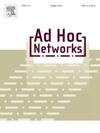MRM-PSO: An enhanced particle swarm optimization technique for resource management in highly dynamic edge computing environments
IF 4.8
3区 计算机科学
Q1 COMPUTER SCIENCE, INFORMATION SYSTEMS
引用次数: 0
Abstract
The resource constraints of Internet of Things (IoT) devices pose significant hurdles to delay-sensitive applications that operate in dynamic and wireless settings. Since offloading tasks to cloud servers can be hindered by security concerns and latency issues, edge and fog computing bring computation closer to data sources. Given their inherently distributed and resource-constrained nature, edge/fog-enabled platforms require more advanced resource-management solutions to address the numerous constraints encountered in dynamic and wireless environments. This study introduces an innovative resource management algorithm designed for dynamic edge/fog computing environments, tailored to real-world applications, with the objective of enhancing delay performance through optimal container placement. The resource management problem incorporates mobility patterns in wireless settings to reduce migration delay and the processing history of edge/fog nodes to provide a novel method for computing processing delay, resulting in a combined optimization problem expressed in an integer linear programming (ILP) format. To address the formulated NP-Hard problem, we developed a low-complexity Metaheuristic Resource Management algorithm based on Particle Swarm Optimization (MRM-PSO) with effective particle modelling. Our experimental findings demonstrate that greedy heuristics and genetic algorithm (GA) are inadequate for efficiently resolving a given problem, whereas our proposed MRM-PSO algorithm efficiently locates near-optimal solutions within reasonable execution times when compared to exact solvers. MRM-PSO reduces execution time by up to 663.82 % in the worst case and 2307.5 % in the best case. Furthermore, it attains a delay that is just 0.98 % higher in the best case and 5.54 % higher in the worst case compared to the optimal solution.
MRM-PSO:一种用于高动态边缘计算环境下资源管理的增强粒子群优化技术
物联网(IoT)设备的资源限制对在动态和无线环境中运行的延迟敏感应用构成了重大障碍。由于将任务卸载到云服务器可能会受到安全问题和延迟问题的阻碍,边缘计算和雾计算使计算更接近数据源。考虑到其固有的分布式和资源约束特性,支持边缘/雾的平台需要更先进的资源管理解决方案来解决动态和无线环境中遇到的众多限制。本研究介绍了一种创新的资源管理算法,该算法专为动态边缘/雾计算环境而设计,针对现实世界的应用进行了定制,目的是通过优化容器放置来提高延迟性能。资源管理问题结合了无线环境下的移动模式,以减少迁移延迟和边缘/雾节点的处理历史,为计算处理延迟提供了一种新的方法,从而形成了一个用整数线性规划(ILP)格式表示的组合优化问题。为了解决公式化的NP-Hard问题,我们开发了一种基于有效粒子建模的粒子群优化(MRM-PSO)的低复杂度元启发式资源管理算法。我们的实验结果表明,贪婪启发式和遗传算法(GA)不足以有效地解决给定问题,而我们提出的MRM-PSO算法与精确求解器相比,可以在合理的执行时间内有效地找到接近最优的解。在最坏的情况下,MRM-PSO最多可减少663.82%的执行时间,在最好的情况下可减少2307.5%的执行时间。此外,与最优解决方案相比,它在最佳情况下的延迟仅高出0.98%,在最坏情况下的延迟仅高出5.54%。
本文章由计算机程序翻译,如有差异,请以英文原文为准。
求助全文
约1分钟内获得全文
求助全文
来源期刊

Ad Hoc Networks
工程技术-电信学
CiteScore
10.20
自引率
4.20%
发文量
131
审稿时长
4.8 months
期刊介绍:
The Ad Hoc Networks is an international and archival journal providing a publication vehicle for complete coverage of all topics of interest to those involved in ad hoc and sensor networking areas. The Ad Hoc Networks considers original, high quality and unpublished contributions addressing all aspects of ad hoc and sensor networks. Specific areas of interest include, but are not limited to:
Mobile and Wireless Ad Hoc Networks
Sensor Networks
Wireless Local and Personal Area Networks
Home Networks
Ad Hoc Networks of Autonomous Intelligent Systems
Novel Architectures for Ad Hoc and Sensor Networks
Self-organizing Network Architectures and Protocols
Transport Layer Protocols
Routing protocols (unicast, multicast, geocast, etc.)
Media Access Control Techniques
Error Control Schemes
Power-Aware, Low-Power and Energy-Efficient Designs
Synchronization and Scheduling Issues
Mobility Management
Mobility-Tolerant Communication Protocols
Location Tracking and Location-based Services
Resource and Information Management
Security and Fault-Tolerance Issues
Hardware and Software Platforms, Systems, and Testbeds
Experimental and Prototype Results
Quality-of-Service Issues
Cross-Layer Interactions
Scalability Issues
Performance Analysis and Simulation of Protocols.
 求助内容:
求助内容: 应助结果提醒方式:
应助结果提醒方式:


